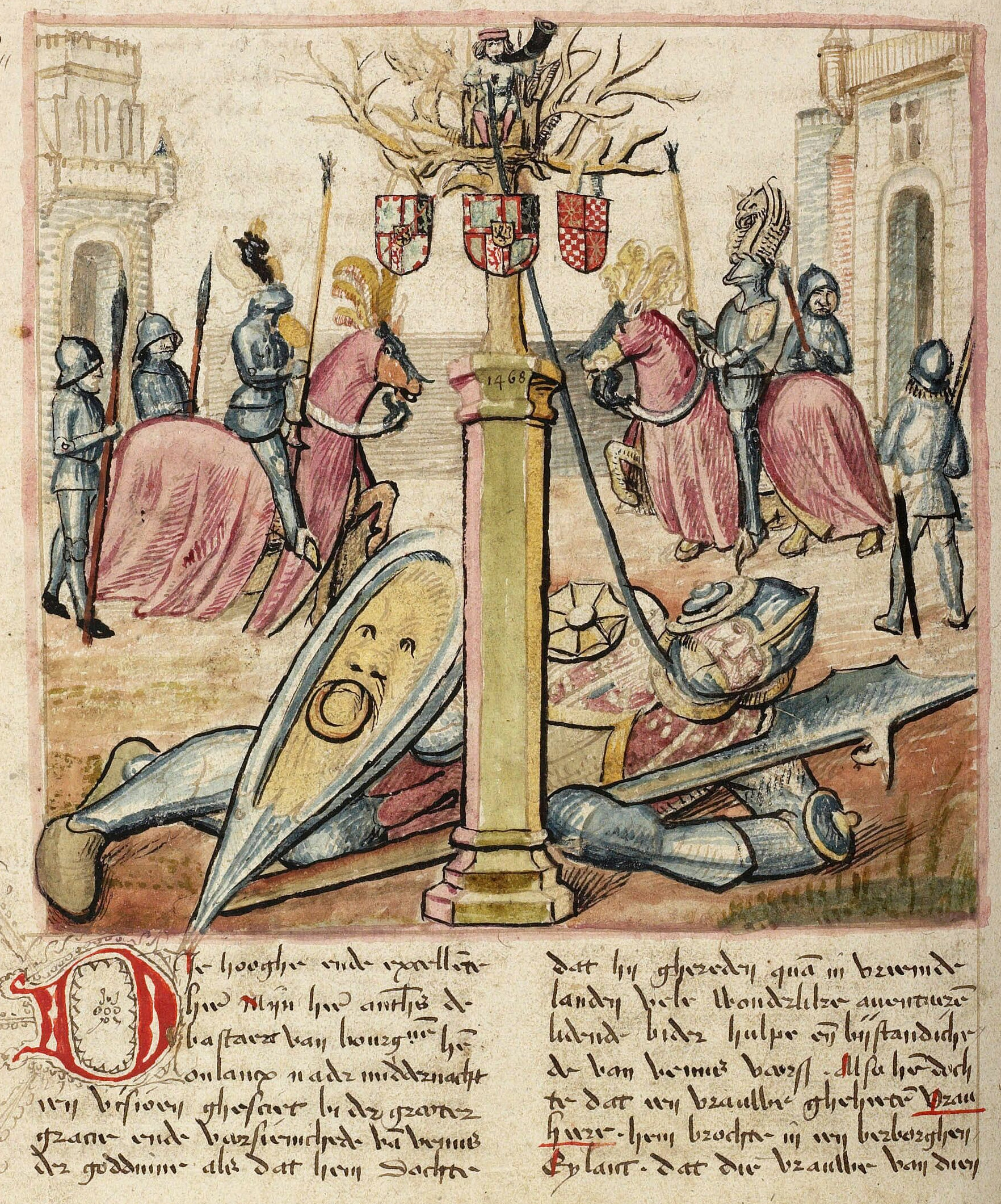Bruges, 3 July 1468: in one of the richest and most powerful cities of Flanders, hundreds of people have gathered to celebrate the wedding of Charles the Bold, the mighty duke of Burgundy, and Margaret of York, the sister of Edward IV, the English king. But now extraordinary things are happening on the marketplace. A golden tree stands in its centre, surrounded by three people: a dwarf with an hourglass, a reclining giant and a nobleman. A herald announces the imminent arrival of his lord, Adolf of Cleves, who wishes to challenge the ‘Knight of the Golden Tree’. This knight is none other than Antoine, the Great Bastard of Burgundy, Charles the Bold’s half-brother. Today, he has assumed the identity of the ‘Knight of the Golden Tree’ in order to fight anyone who comes to challenge him and Adolf was the first of twenty-six competitors to do so...
So what was going on here?
This event, known as the Pas de l'Arbre d'or (‘Golden Tree’), held in Bruges was an example of a pas d’armes (English: passage of arms), a type of chivalric tournament inspired by themes from courtly literature. At this pas in 1468, the town marketplace became a lavishly decorated stage, with stands covered in rich tapestries for the judges and onlookers to sit in. An entire court, its visitors and the citizens of Bruges were all there to watch noblemen fight to acquire honour, reputation and wealth and to demonstrate their worth and masculine prowess. Yet this was no mere theatrics as the risk of injury was very real...
